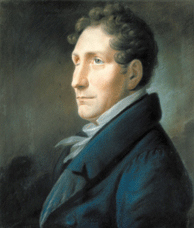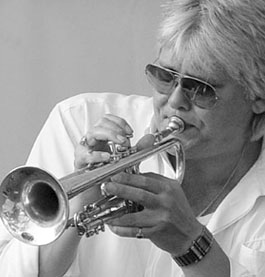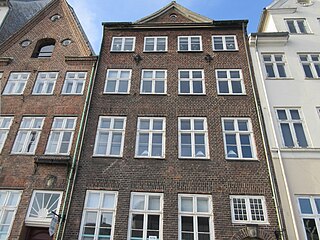
AntonDiabelli was an Austrian music publisher, editor and composer. Best known in his time as a publisher, he is most familiar today as the composer of the waltz on which Ludwig van Beethoven wrote his set of thirty-three Diabelli Variations.

Edvard Hagerup Grieg was a Norwegian composer and pianist. He is widely considered one of the leading Romantic era composers, and his music is part of the standard classical repertoire worldwide. His use of Norwegian folk music in his own compositions brought the music of Norway to fame, as well as helping to develop a national identity, much as Jean Sibelius did in Finland and Bedřich Smetana in Bohemia.

Carl August Nielsen was a Danish composer, conductor and violinist, widely recognized as his country's most prominent composer.

The earliest traces of Danish music go back to the many twisting Bronze-Age horns or lurs which some experts have identified as musical instruments. They have been discovered in various parts of Scandinavia, mostly Denmark, since the end of the 18th century. Denmark's most famous classical composer is Carl Nielsen, especially remembered for his six symphonies, while the Royal Danish Ballet specializes in the work of Danish choreographer August Bournonville. Danes have distinguished themselves as jazz musicians, and the Copenhagen Jazz Festival has acquired an international reputation. The modern pop and rock scene has produced a few names of note, including MØ, Dizzy Mizz Lizzy, Lukas Graham, D-A-D, Tina Dico, Aqua, The Raveonettes, Michael Learns to Rock, Volbeat, Alphabeat, Safri Duo, Medina, Oh Land, Kashmir, King Diamond, Outlandish, and Mew. Lars Ulrich is the first Danish musician to be inducted into the Rock and Roll Hall of Fame.

Hans Christian Lumbye was a Danish composer of waltzes, polkas, mazurkas and galops, among other things.

Niels Wilhelm Gade was a Danish composer, conductor, violinist, organist and teacher. Together with Johan Peter Emilius Hartmann, he was the leading Danish musician of his day, in the period known as the Danish Golden Age.

Friedrich Daniel Rudolf Kuhlau was a Danish pianist and composer during the late Classical and early Romantic periods. He was a central figure of the Danish Golden Age and is immortalized in Danish cultural history through his music for Elves' Hill, the first true work of Danish National Romanticism and a concealed tribute to the absolute monarchy. To this day it is his version of this melody which is the definitive arrangement.

Jacob Thune Hansen Gade was a Danish violinist and composer, mostly of orchestral popular music. He is remembered today for a single tune, Jalousie.
Anthony Francis Keigwin Monkman was an English rock, classical and film score composer, and a founding member of both the progressive rock band Curved Air and the classical/rock fusion band Sky.
The Danish Golden Age covers a period of exceptional creative production in Denmark, especially during the first half of the 19th century. Although Copenhagen had suffered from fires, bombardment and national bankruptcy, the arts took on a new period of creativity catalysed by Romanticism from Germany. The period is probably most commonly associated with the Golden Age of Danish Painting from 1800 to around 1850 which encompasses the work of Christoffer Wilhelm Eckersberg and his students, including Wilhelm Bendz, Christen Købke, Martinus Rørbye, Constantin Hansen and Wilhelm Marstrand, as well as the sculpture of Bertel Thorvaldsen.

Christoph(er) Ernst Friedrich Weyse was a Danish composer during the Danish Golden Age.

Leaving Rivendell is the fourth album by the Danish group The Tolkien Ensemble, with Christopher Lee as additional vocalist. It features songs composed to the lyrics found in The Lord of the Rings by J. R. R. Tolkien and forms the end part of a complete musical interpretation of all lyrics in the book.

Peter Eiberg Thorup was a Danish guitarist, singer, composer and record producer. He was one of the most important blues musicians in Denmark, and he was known outside his own country, when in the late 1960s he met Alexis Korner and the two formed the bands New Church, The Beefeaters, CCS, and later Snape.

Lars Anders Fredrik "Lasse" Mårtenson was a Finnish singer, composer, actor, and theater conductor.
Lise kommer til Byen is a 1947 Danish family film directed by Lau Lauritzen Jr. and Alice O'Fredericks.

Frederik Christian Funck was a Danish cellist and composer. He was the brother of Peter Ferdinand Funck and nephew of Claus and Peder Schall, all also musicians.
Sven Rudolf Sidenius Gyldmark was a Danish film score composer. He was the brother of Hugo Gyldmark and Leonard who were also composers.

Danish jazz dates back to 1923 when Valdemar Eiberg formed a jazz orchestra and recorded what are thought to be the first Danish jazz records in August 1924. However, jazz in Denmark is typically first dated to 1925, when bandleader Sam Wooding toured in Copenhagen with an orchestra. This was the first time most Danes had heard jazz music. Some prominent early Danish jazz musicians include Erik Tuxen who formed a jazz band and was later named conductor of the Danish Radio Symphony Orchestra; Bernhard Christensen, an art music composer who incorporated jazz elements into his pieces, and Sven Møller Kristensen, who was the lyricist for many of Bernhard Christensen's pieces and who wrote a book on jazz theory in Danish.

Jens Winther was a Danish jazz trumpeter, composer, arranger and bandleader. He composed for and played in a long line of European big bands and other orchestras. His work includes compositions for symphony orchestras, chamber ensembles and choirs. As a bandleader, he was noted on the international Jazz scene with his JW European Quartet, particularly since 2007. In 2008, he founded the fusion band JW Electrazz. From 2009, he was based in Berlin, Germany.

Nybrogade 18 is an 18th-century canal house overlooking the Slotsholmen Canal in central Copenhagen, Denmark. The architect Vilhelm Tvede lived on the third floor as a child. The entire property was later owned first by him and then by his son Gotfred Tvede. It was listed in the Danish registry of protected buildings and places in 1918.















